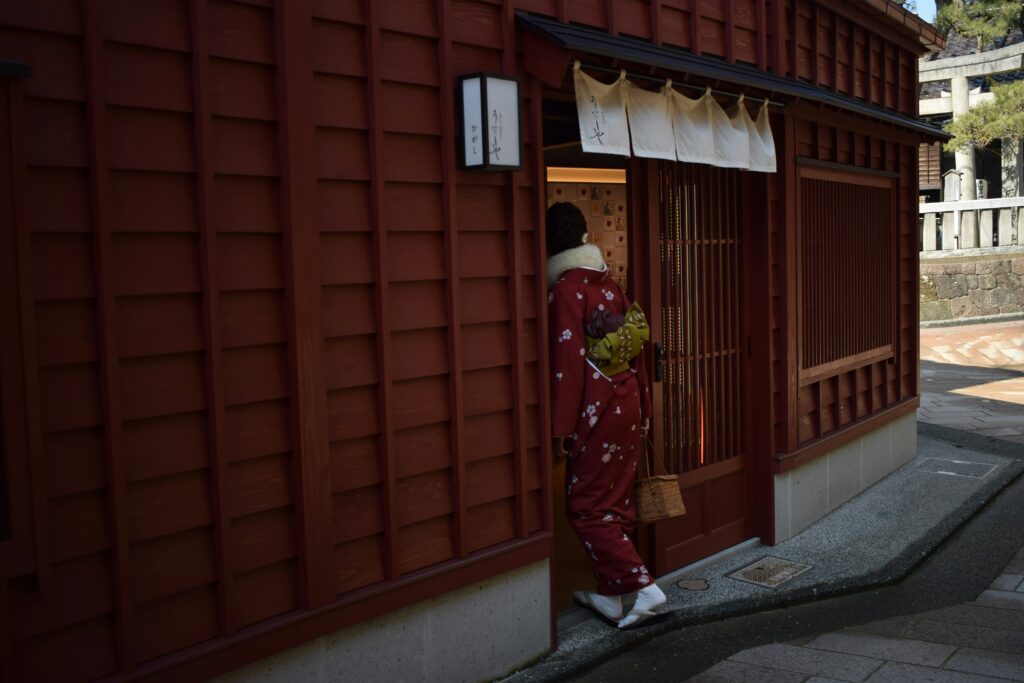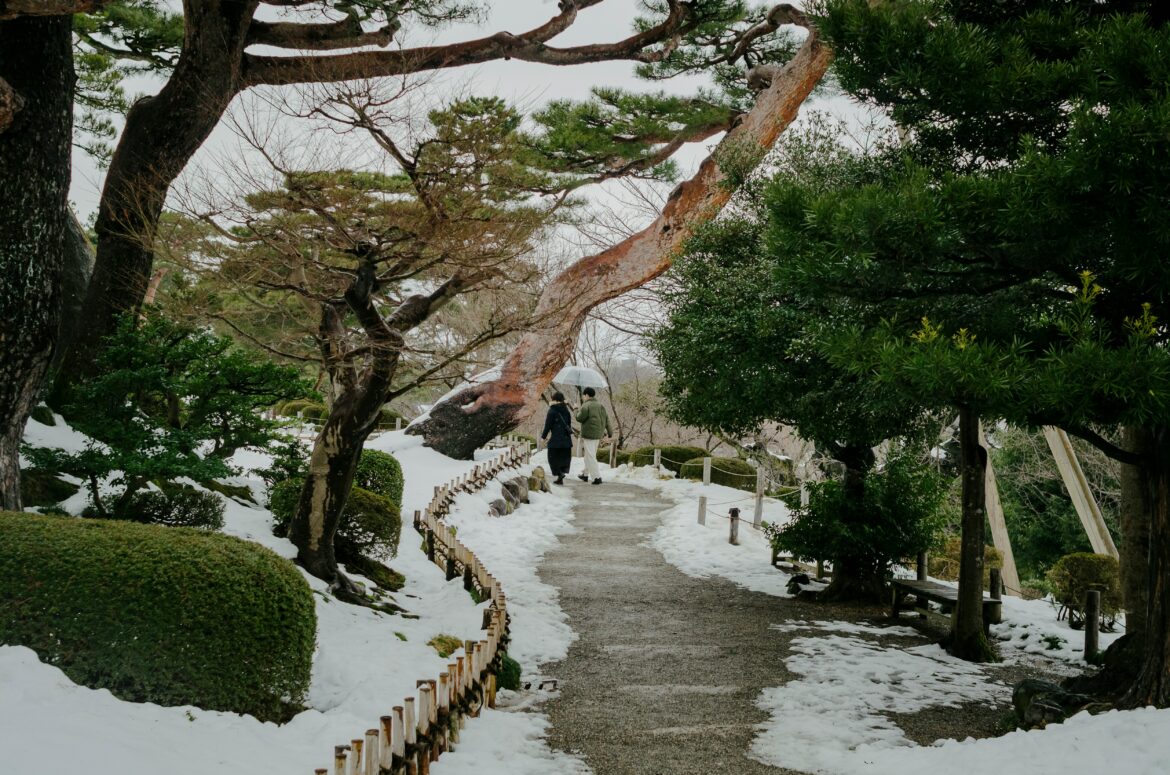Top 15 Unmissable Things to Do in Kanazawa: The Ultimate “Little Kyoto” Itinerary & Culture Guide
Nestled on Japan’s west coast, Kanazawa stands as one of the country’s most beautifully preserved cultural treasures. Known as “Little Kyoto”, this remarkable city offers an authentic glimpse into Japan’s feudal past while embracing contemporary art and cuisine. Unlike many Japanese cities that suffered wartime destruction, Kanazawa emerged unscathed, preserving its Edo-period districts, traditional crafts, and cultural practices that have thrived for centuries.
With its stunning gardens, historic samurai and geisha districts, and world-renowned culinary scene, Kanazawa provides an immersive cultural experience that rivals any destination in Japan. The city’s commitment to preserving traditional arts while fostering innovation creates a unique atmosphere where ancient tea ceremonies coexist with cutting-edge contemporary art installations. Whether you’re seeking spiritual tranquility in perfectly manicured gardens or culinary adventures in bustling markets, Kanazawa delivers unforgettable experiences that capture the essence of Japanese culture.
Historic Gardens & Castles: Timeless Beauty and Samurai Heritage
1. Kenrokuen Garden: Japan’s Crown Jewel
Kenrokuen Garden stands as one of Japan’s three most beautiful gardens, attracting over 2 million visitors annually according to Kanazawa Tourism statistics. This masterpiece of landscape design showcases the six essential qualities of a perfect garden: spaciousness, seclusion, artificiality, antiquity, water features, and panoramic views. The garden transforms dramatically with each season, offering cherry blossoms in spring, lush greenery in summer, fiery autumn colors, and the famous yukitsuri (snow protection) ropes in winter.
The garden’s 25 acres contain over 8,750 trees and 183 species of plants, creating a living museum of Japanese horticulture. Key highlights include the iconic Kotoji Lantern, the oldest fountain in Japan, and the stunning Kasumigaike Pond. Visit early morning or late afternoon for the best photography opportunities and fewer crowds. The adjacent tea houses offer traditional matcha and wagashi sweets, providing a perfect rest stop while contemplating the garden’s serene beauty.
2. Kanazawa Castle Park: Fortress of the Maeda Clan
Adjacent to Kenrokuen Garden, Kanazawa Castle Park preserves the legacy of the powerful Maeda clan, who ruled the Kaga Domain for over 280 years. The castle’s impressive stone walls, reconstructed gates, and traditional architecture demonstrate the sophisticated defensive strategies of Japan’s feudal period. The recently restored Gojukken Nagaya storehouse and Hishi Yagura turret showcase traditional Japanese carpentry techniques using no nails.
The castle grounds offer seasonal illuminations and cultural events throughout the year. Spring brings hanami parties beneath blooming cherry trees, while autumn transforms the grounds into a tapestry of red and gold. The castle’s museum provides insights into samurai culture and the region’s history, making it an essential stop for understanding Kanazawa’s cultural significance.
Traditional Districts: Living Museums of Japanese Culture
3. Higashi Chaya District: Geisha Culture Preserved
The Higashi Chaya District represents Japan’s best-preserved geisha district, where traditional ochaya (tea houses) continue operating as they have for over 200 years. According to cultural heritage expert Dr. Sarah Chen, “Kanazawa’s commitment to maintaining its cultural heritage while embracing modernity is remarkable.” The district’s narrow streets, wooden facades, and traditional lattice work create an atmospheric journey through time.
Visitors can experience authentic geisha performances at establishments like Kaikaro, one of the oldest tea houses, or explore the Shima tea house museum for insights into geisha culture. The district comes alive at night when lanterns illuminate the streets and the sound of shamisen music drifts from the tea houses. For a deeper cultural experience, consider booking a tea ceremony or traditional meal at one of the active ochaya.
4. Nagamachi Samurai District: Warriors’ Quarter
The Nagamachi Samurai District preserves the residential area where Kanazawa’s samurai class once lived. Earth-colored walls, narrow lanes, and traditional gates create an authentic atmosphere of feudal Japan. The Nomura Samurai House offers the best preserved example of samurai architecture, featuring beautiful gardens, artifacts, and period furnishings.
Visitors can try on samurai armor, participate in sword demonstrations, and explore the intricate garden design that reflects samurai aesthetics. The district’s museums showcase samurai weapons, armor, and daily life artifacts. Winter brings special beauty when snow blankets the traditional roofs and gardens, creating picture-perfect scenes reminiscent of historical paintings.
5. Kazuemachi District: Riverside Tranquility
The smallest of Kanazawa’s three historic districts, Kazuemachi offers a more intimate experience along the Asano River. This quiet quarter features traditional architecture converted into galleries, cafes, and boutiques. The riverside location provides beautiful walking paths and photography opportunities, especially during cherry blossom season.
The district’s peaceful atmosphere makes it perfect for afternoon strolls and discovering hidden cafes serving traditional sweets and modern interpretations of Japanese cuisine. The area’s preservation efforts have created a living museum where traditional crafts and contemporary art coexist harmoniously.
Cultural Experiences: Art, Spirituality, and Tradition
6. 21st Century Museum of Contemporary Art
This architectural marvel challenges traditional museum concepts with its circular design and emphasis on accessibility. The museum’s famous “Swimming Pool” installation by Leandro Erlich creates optical illusions that captivate visitors of all ages. The building itself embodies Kanazawa’s philosophy of blending tradition with innovation, featuring both indoor galleries and outdoor installations.
7. D.T. Suzuki Museum: Zen Philosophy and Design
Dedicated to the renowned Zen Buddhist philosopher, this museum combines minimalist architecture with contemplative spaces. The building’s design encourages reflection and meditation, featuring a water mirror garden that changes with the seasons. Visitors can participate in meditation sessions and learn about Zen philosophy’s influence on Japanese culture.
8. Myoryuji (Ninja Temple): Samurai Intrigue
Despite its nickname, Myoryuji Temple was actually designed as a secret fortress for the Maeda clan. The three-story structure contains hidden rooms, secret passages, and defensive mechanisms. Guided tours reveal the temple’s 23 rooms, 29 staircases, and various trap doors designed to confuse potential attackers.
Culinary Adventures: Gold Leaf and Fresh Seafood
9. Omicho Market: Kanazawa’s Kitchen
Operating for over 280 years, Omicho Market serves as Kanazawa’s culinary heart. The market’s 200 shops and stalls offer the freshest seafood from the nearby Japan Sea, including prized nodoguro (blackthroat seaperch) and sweet amaebi shrimp. The market’s kaisen-don (seafood bowls) are legendary among food enthusiasts.
10. Gold Leaf Experiences: Kanazawa’s Shining Craft
Kanazawa produces an impressive 99% of Japan’s gold leaf according to the Japan Gold Leaf Association. Visitors can participate in gold leaf workshops, creating their own decorative items, or indulge in gold leaf ice cream and sake. The Hakuza Gold Leaf Museum offers insights into this ancient craft’s history and techniques.
11. Traditional Crafts: Pottery, Lacquerware, and Silk
The city maintains over 100 traditional craft workshops according to the Kanazawa Craft Council. Visitors can observe artisans creating Kutani porcelain, Kanazawa lacquerware, and exquisite silk textiles. Many workshops offer hands-on experiences, allowing visitors to create their own pieces under expert guidance.
12. Tea Ceremony and Wagashi: The Art of Japanese Sweets
Kanazawa’s tea culture reflects the city’s aesthetic refinement. Traditional tea houses offer authentic ceremonies featuring locally made wagashi (Japanese sweets) that change with the seasons. The sweets’ intricate designs often incorporate gold leaf, creating edible art pieces that complement the tea ceremony’s spiritual aspects. Try a tea ceremony at local tea houses.
13. Seasonal Festivals and Events
Kanazawa’s festival calendar reflects deep cultural traditions. The Hyakumangoku Festival in June celebrates the city’s founding with parades and performances. Cherry blossom season transforms the city into a pink wonderland, while autumn brings spectacular foliage displays. Winter’s snow country beauty creates magical scenes throughout the historic districts.
14. Kanazawa Station and Tsuzumi Gate: Modern Gateway
The striking Tsuzumi Gate welcomes visitors with its traditional drum-inspired design, while the station’s glass dome creates a modern architectural marvel. The station complex houses excellent restaurants, shopping, and serves as the perfect starting point for exploring the city. The design symbolizes Kanazawa’s successful blend of tradition and modernity.
15. Gourmet Restaurants and Local Cuisine
Kanazawa’s culinary scene extends beyond markets to include world-class restaurants specializing in kaiseki cuisine, fresh sushi, and local specialties. As noted by Hiroshi Nakamura from the Japan Tourism Agency, “Kanazawa represents the perfect preservation of traditional Japanese culture,” and this extends to its exceptional dining experiences that showcase regional ingredients and time-honored techniques.
Essential Tips for Your Kanazawa Adventure
- Purchase a Kanazawa City Bus Pass for convenient transportation between attractions
- Visit during shoulder seasons (late spring or early autumn) for optimal weather and fewer crowds
- Book geisha performances and ninja temple tours in advance as they fill quickly
- Consider staying in a traditional ryokan for the full cultural experience
- Explore the Lonely Planet Japan travel guide for additional insights into Japanese culture
Common Mistakes to Avoid
- Rushing through the gardens – allow at least half a day for Kenrokuen
- Skipping the traditional districts at night when they’re most atmospheric
- Not making reservations for popular restaurants and cultural experiences
Conclusion
Kanazawa offers an unparalleled journey through Japan’s cultural heritage, where ancient traditions thrive alongside contemporary innovations. From the breathtaking beauty of Kenrokuen Garden to the living history of the geisha districts, every experience reveals layers of cultural depth that make this city truly special. The combination of world-class museums, traditional crafts, exceptional cuisine, and preserved architecture creates an authentic Japanese experience that surpasses many more famous destinations.
Whether you’re drawn to the spiritual tranquility of Zen temples, the artistry of gold leaf crafts, or the culinary excellence of fresh seafood, Kanazawa delivers unforgettable memories that will deepen your appreciation for Japanese culture. Plan your visit to this remarkable city and discover why Kanazawa rightfully claims its place as one of Japan’s most treasured cultural destinations.

